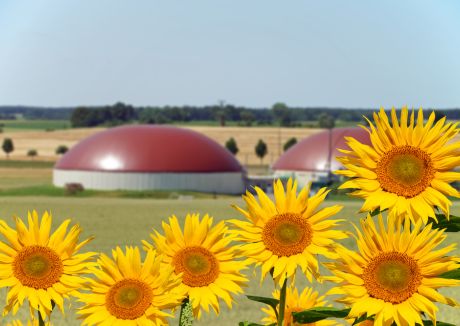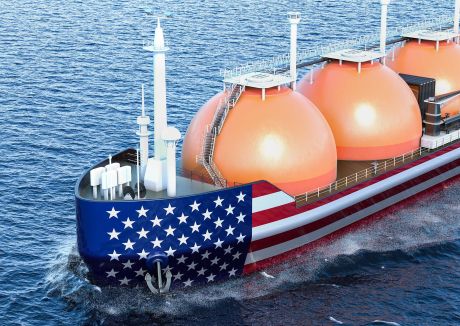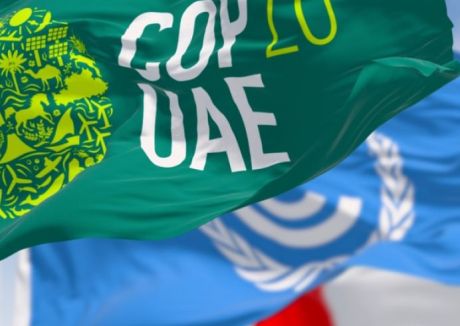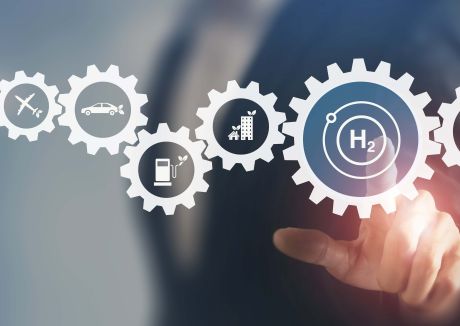Ahead of COP28, politicians in the European Union agreed to roll out the bloc’s EU Methane Regulation, which aims to reduce methane emissions in the EU’s own energy sector and its global supply chains.
The proposed rules, which are expected to be approved by the European Parliament and EU countries by the end of 2023, seek action on new import contracts and are set for implementation over three phases.
The rules come amid increasing global awareness of the need to tackle methane emissions as well as those comprising CO2 and other greenhouse gases.
According to the EU, the first phase will focus on data collection and the creation of a methane emitters global monitoring tool and a mechanism to respond to so-called “super emitters”.
The second and third phases would oblige EU producers and exporters to the EU to implement monitoring, reporting and verification measures from the start of 2027, with maximum metane intensity limits being imposed by 2030.
To effectively comply, companies must be prepared to roll out procedures that would involve measuring and reporting emissions, along with ensuring their internal reporting systems can demonstrate monitoring of leaks and trace emissions.
This quick-take briefing provides the essential takeaways for sector firms, highlighting key issues to prioritise in their respective plans to comply with the EU’s requirements.
Who will be impacted?
From January 2027, with limited prospective new indigenous supply, the planned policy will potentially principally apply to all those signing new gas import contracts for the EU’s gas supplies, depending on the level at which the limit of methane intensity is set.
In 2022 the EU imported 443 Bcm of gas, 299 Bcm via pipelines and 145 Bcm as LNG. Pipeline gas supply in 2022 was predominately sourced from Norway and Russia, however, Russian supply has decreased drastically since August 2022.
Existing LNG supply to Europe is predominately from the US and Qatar and this is likely to remain the case for as long as Europe needs LNG.
- Gas industry: Likely impacts for the whole value chain (upstream producers, aggregators, shippers and buyers).
- LNG shipping: issue of methane slippage through ship engines would need to be addressed under the new rules.
- Larger US gas producers: expected to have sufficient resources to adapt.
- Risks for smaller US producers: companies in this class may be challenged with the affordability of adapting. The implication is some may simply choose to opt out of compliance. Currently, the agenda to put more effort into tackling emissions is often driven by corporate philosophy rather than commercial considerations or specific regulation driving change.
- Projects seeking finance: Consideration needs to be given for those seeking project finance, with care taken around projects outside the US taking FID, understood to have higher-than-average emissions profiles. There is added complication in the case of the US where, prior to FID, the precise source(s) of the feed gas is often unknown.
How does the US support upstream emissions reductions?
In the US some funding will be available to help smaller and mid-sized gas producers reduce their emissions. However, financial penalties could end up leading to cost issues and potentially consolidation. The funding available in the US comprises the following:
- Methane Emissions Reduction program – Clean Air Act Section 136 of Inflation Reduction Act (IRA) provides state funding to voluntarily identify and reduce methane emissions from low producing conventional wells. Funding will also be available to a broader range of applicants within the oil and gas sector to advance deployment of technologies and practices to monitor and reduce emissions.
- IRA includes a fee, or “waste emissions charge” on methane emissions from oil and gas operations based on certain emissions intensity thresholds, building on earlier legislative proposals. The methane fee will start at $900 per metric ton in 2025 for emissions reported in excess of the threshold for calendar year 2024, rising to $1,200 per ton in 2026 and $1,500 per ton in 2027 and thereafter.
Which jurisdictions are in scope for the proposed rules?
The suppliers most impacted will be those with the highest methane emissions per unit of production, i.e. the highest methane emissions intensities.
On a country level, according to IEA data, Algeria, Russia and the US would seem to be potentially the most vulnerable. However, there is also a need to consider whether gas imported to the EU from these countries is supplied under pre-existing contracts or comes from compliant sources.
![[A graph showing the amount of gas produced by countries/regions Description automatically generated with medium confidence]](https://www.gasstrategies.com/sites/default/files/articles/iea_2023.jpg) Source: IEA Latin America Energy Outlook, 2023
Source: IEA Latin America Energy Outlook, 2023
It is worth noting that although new long-term pipeline import contracts may be unlikely to be signed by European buyers, there is an increasing amount of short-term trade (e.g. from Algeria).
What is the likely timeframe for when the rules will take effect?
Oil, gas, and coal companies will have to monitor, detect and address methane leaks across the EU, complying with rules that will also apply to the importers of fossil fuels from 2027.
By 2030, importers will have to meet maximum methane intensity thresholds, which are yet to be defined by the EU.
Measuring emissions: What will the actual requirement involve?
To date, there is no universally accepted and adopted standard or consistency of measurement of methane emissions. It is worth noting that the EU is yet to indicate the standards and measurement systems that will be used to measure reductions, under its rules.
The new regulation will set maximum methane intensity values; however, clarity is needed as to whether this will be a set number or relative to a benchmark year. There is also the possibility that allowance will be made for non-compliant companies which are moving in the right direction.
More detail is also needed on whether the requirement will be in the form of a reduction percentage against a benchmark, or whether it will be a flat percentage of total gas delivered.
Complexities
This will be particularly complex in the US, where gas aggregators receiving gases from a mix of sources (with potentially different emissions’ profiles) play a significant role.
Currently, there are two broad approaches to quantifying emissions: primary measurements (e.g. ground sensors, drones and satellite as in Project Canary) or methodologies based on compiling equipment specifications.
As the EU looks to develop a standard, it may consider existing frameworks, such as UNEP’s voluntary Oil and Gas Methane Partnership (OGMP) 2.0 Framework. It should be noted that measuring methane emissions is more difficult than CO2 emissions because methane is usually from leaks and therefore by definition unintentional.
Which issues need priority treatment?
- Entities signing SPAs may need to consider drafting provisions for the proposed regulations into contracts. Planning for delays is essential until there is greater clarity from the EU.
- Additional cost in the US: US gas producers pursuing developments with intensive methane emissions may find that LNG producers choose not to pay higher prices for their gas.
What issues still need clarification?
The cap at which methane intensity will be set is yet to be defined by the EU.
Further, more detail is also needed regarding the penalties which will be enforced for those exceeding the cap and the processes, checks and certification regimes to be implemented.
Companies will also need to consider to what extent the grandfathering of contracts may exempt parties from the new regulations, and whether destination flexible LNG i.e. FOB (LNG that is not contractually committed or restricted to delivery to the EU) can be regarded as prior contracted for the EU.
Importers holding potentially qualifying supply contracts, that are set to expire, may want to consider extending the current contract(s), instead of negotiating new agreements.
How will the regulations apply to coal?
Poland has been lobbying to defang the requirements – the result may be that the regulations could hurt coal more than gas and be a net positive for gas.
Are there risks of market disruption?
Will this drive a new dash to get long-term contracts signed to beat the timelines for contract capture? Perhaps. Ultimately, the proposed rules provide an opportunity for producers to get their act together on methane emissions reduction rather than trying to get contracts in before the deadline.
There may be a two-tier pricing system emerging, for example responsibly sourced gas (RSG) and non-RSG gas which would then most likely need correction by regulators. This correction may, for example, be linked to markers such as the Methane Intensity Premiums currently published by Platts for each US supply basin.








